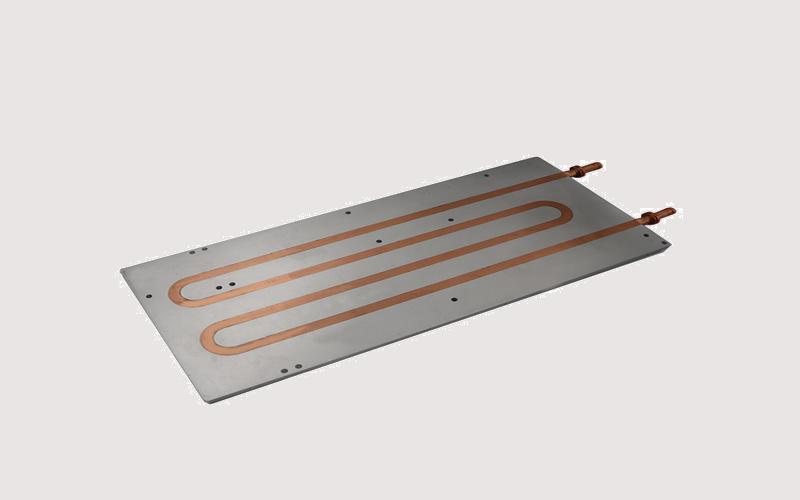The Environmental Impact of Liquid Cold Plate Heat Sink: An Overview
As the demand for high-performance electronic devices continues to rise, the need for effective cooling technologies becomes paramount. Among the various cooling solutions available, liquid cold plate heat sinks have gained significant attention due to their efficient heat dissipation capabilities. However, it is crucial to understand the potential environmental impact of these cooling systems. In this article, we will explore the environmental consequences associated with liquid cold plate heat sinks and shed light on the importance of adopting sustainable cooling measures.
1. Energy Consumption and Efficiency
One of the primary concerns regarding liquid cold plate heat sinks is their energy consumption. As these systems incorporate pumps and fans to circulate the cooling liquid, they require a certain amount of electricity to function. However, advancements in technology have led to the development of more energy-efficient pumps and fans, minimizing the overall energy consumption of liquid cold plate heat sinks. It is essential for manufacturers and users to select energy-efficient components to reduce the environmental impact associated with these systems.
2. Material Selection
The materials used in liquid cold plate heat sinks can have a significant impact on the environment. Traditional cooling solutions often rely on materials such as copper or aluminum, which require substantial energy and resources for extraction and processing. However, the industry is gradually shifting towards more sustainable materials, such as recycled metals or even biodegradable alternatives. By choosing environmentally friendly materials, the impact of liquid cold plate heat sinks on the environment can be significantly reduced.
3. Water Usage and Conservation
Water is an essential component in liquid cold plate heat sinks, as it serves as the primary medium for heat transfer. However, the continuous circulation and evaporation of water can lead to significant water consumption. It is crucial to implement measures to conserve water and minimize wastage. For instance, incorporating closed-loop systems that recirculate and filter the cooling liquid can help reduce water consumption and minimize the environmental impact of liquid cold plate heat sinks.
4. Chemical Coolants and Environmental Safety
Many liquid cold plate heat sinks use chemical coolants, such as ethylene glycol or propylene glycol, to enhance heat transfer efficiency. However, these coolants can be harmful to the environment if not handled properly. Leakage or improper disposal of chemical coolants can contaminate water sources and have adverse effects on ecosystems. It is crucial to handle and dispose of these chemical coolants responsibly, following proper environmental regulations and guidelines.
5. End-of-Life Disposal
Considering the lifecycle of liquid cold plate heat sinks is vital to understanding their environmental impact. When these cooling systems reach the end of their operational life, proper disposal is necessary to prevent environmental harm. Recycling and proper disposal methods should be employed to ensure that valuable components are recovered and hazardous materials are handled appropriately, minimizing the overall environmental impact.
6. Carbon Footprint Reduction
Reducing the carbon footprint associated with liquid cold plate heat sinks is crucial for minimizing their environmental impact. By optimizing the design and improving the efficiency of these cooling systems, energy consumption can be reduced, resulting in lower greenhouse gas emissions. Additionally, exploring alternative cooling technologies, such as passive cooling or renewable energy-powered systems, can further contribute to carbon footprint reduction.
7. Life Cycle Assessment (LCA)
Conducting a comprehensive life cycle assessment (LCA) is essential to evaluate the overall environmental impact of liquid cold plate heat sinks. LCA takes into account every stage of a product's life, from raw material extraction to manufacturing, use, and disposal. By identifying the key environmental hotspots, manufacturers can make informed decisions to improve the sustainability of liquid cold plate heat sink designs.
8. Importance of Sustainable Cooling Solutions
The environmental impact of liquid cold plate heat sinks highlights the importance of adopting sustainable cooling solutions. As global energy consumption continues to rise, it is crucial to develop and utilize cooling technologies that minimize environmental harm. Sustainable cooling solutions not only reduce energy consumption and greenhouse gas emissions but also contribute to the conservation of natural resources.
9. Regulatory Standards and Compliance
To ensure a sustainable future, regulatory standards and compliance for cooling technologies are of utmost importance. Government bodies and organizations worldwide are working towards establishing guidelines and regulations that promote environmentally friendly cooling solutions. Manufacturers and users of liquid cold plate heat sinks must stay updated with these standards to ensure compliance and contribute to a greener and more sustainable future.
10. The Role of Research and Innovation
Continued research and innovation play a vital role in minimizing the environmental impact of liquid cold plate heat sinks. By striving to develop more energy-efficient systems, explore alternative materials, and improve recycling and disposal methods, researchers and industry professionals can pave the way for sustainable cooling technologies. Collaboration between academia, industry, and policymakers is essential to drive innovation and mitigate the environmental impact of liquid cold plate heat sinks.

